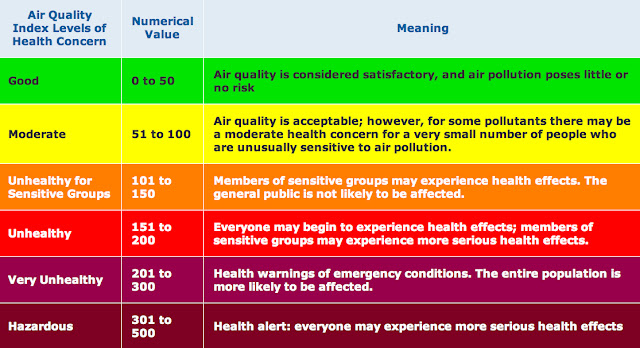Since the start of the year, China's capital Beijing has been swathed in smog so thick that it is causing health concerns as well as inconvenience. Here's the story unpacked:
Why is this newsworthy?
Apart from anything else, the photos are pretty remarkable. Where there were skylines, there are now shadows in a soupy grey haze. And as pictures from NASA's Terra satellite show, the air pollution appears to have wiped the city clean off the Earth. It is also a big deal because air measurements show that levels of certain substances are way above what is considered safe for humans.

Aerial view of Beijing on January 3

Aerial view of Beijing on January 14
How did it get this bad?
Several reasons. A lot of industries, including power plants, still rely on burning coal. Private car ownership in Beijing has also risen massively in the last few years. Take those factors combined with Beijing's geography (it's in a bowl) and a few windless weeks and you get what Londoners used to call a 'peasouper'.
Why is it a problem?
Flights have been grounded. People - especially children - have been advised to stay indoors and turn their air filters on. Hospitals have seen spikes of 20-30% in patients complaining of respiratory problems. Visibility on roads is curtailed meaning that drivers have to keep their headlights on during the day. It is also an issue that can harm 'social harmony' although we haven't seen many protests yet.
What are the health risks?
People who already have respiratory conditions like asthma are most vulnerable, as well as children and older adults. In young children, there are risks for the long-term health of their lungs. The US state of California regards 'particulate matter' as increasing peoples' risk of cancer. According to the World Health Organisation, urban outdoor air pollution is estimated to cause 1.3 million deaths worldwide per year.

 |
| Air pollution readings from the US Embassy |
How is it measured?The Chinese government has not always been forthcoming about releasing figures on air pollution, but seems to be becoming more open. Many western observers use the readings from an instrument on the roof of the US Embassy in Beijing. While this only provides measurements for one area of the city, its readings have been pretty scary. On the evening on January 12, levels of particulate matter topped 700. To put that into perspective, the level in New York at the same time was 19. The EPA's guidelines suggest that anything above 300 is hazardous to health, and anything above 500 is off the scale.
What is being done about it?
According to state news outlets like Xinhua and CCTV, the government has ordered the most heavily-polluting factories to close temporarily, and has reduced its fleet of vehicles on the road by almost a third.
According to state news outlets like Xinhua and CCTV, the government has ordered the most heavily-polluting factories to close temporarily, and has reduced its fleet of vehicles on the road by almost a third.
No comments:
Post a Comment